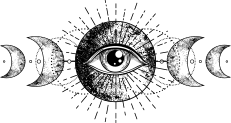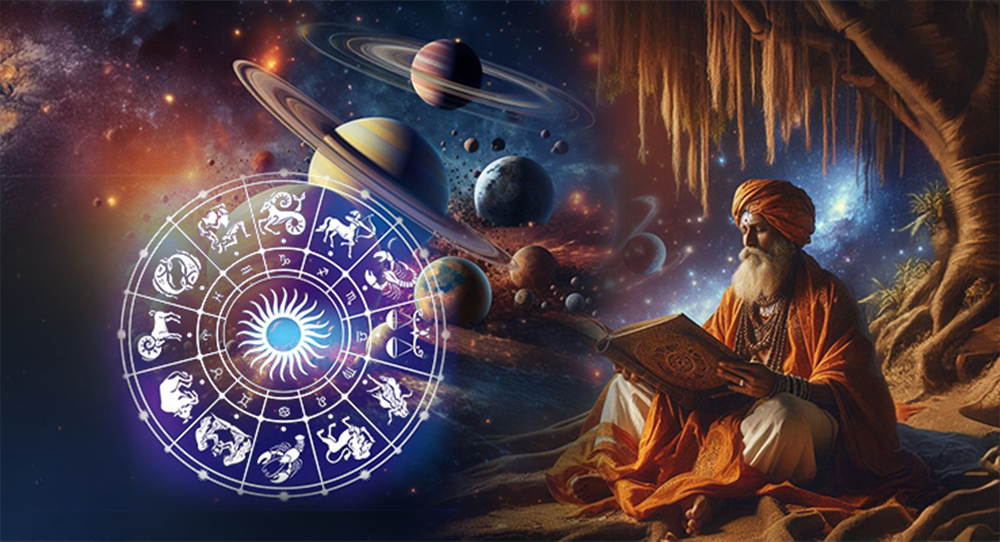Rashis & Bhavas
The Blueprint of Human Destiny
In the sacred tapestry of Sanātana Dharma, the cosmos is not a distant abstraction but a living, breathing manifestation of Ṛta—the divine order. Within this framework, Jyotiṣa Śāstra (Vedic Astrology) emerges not merely as a predictive tool but as a profound spiritual science, revealing the karmic blueprint etched into the soul’s journey through the interplay of Rāśis (Zodiac Signs) and Bhāvas (Houses).
Rāśis: The Cosmic Archetypes
The twelve Rāśis are not just constellations but archetypal energies that shape the psychological and spiritual contours of human life. Each Rāśi is governed by a Graha (planet), and embodies a unique dharmic vibration.
Yathā śarīre indriyāṇi, tathā rāśiṣu grahāḥ sthitāḥ
Just as the senses reside in the body, so do the planets reside in the signs
— Bṛhat Parāśara Horā Śāstra
For instance, Mesha (Aries), ruled by Kuja (Mars), signifies the primal urge to initiate, to conquer, and to assert. It is the fire of creation, the Agni that propels the soul forward. In contrast, Meena (Pisces), ruled by Guru (Jupiter), represents dissolution, compassion, and mokṣa—the final liberation.
Bhāvas: The Domains of Experience
While Rāśis are the energies, Bhāvas are the arenas where these energies manifest. The twelve Bhāvas represent the full spectrum of human experience—from birth to death, from wealth to wisdom.
Bhāvānām phalaṃ jñeyaṃ rāśi-drṣṭi-yutair grahaiḥ
The fruits of the houses are to be known through the signs and the aspects of the planets.
— Jātaka Pārijāta
The 4th Bhāva, for example, is not just about home and mother—it is the seat of Manas (mind) and Sukha (inner peace). When influenced by benefics like Chandra or Guru, it can indicate a serene and spiritually inclined mind. But when afflicted, it may point to emotional turbulence or karmic debts related to maternal lineage.
Sanātana Dharma & the Karmic Blueprint
Sanātana Dharma teaches that every soul is bound by Karma, and Jyotiṣa is the divine lens through which this karma is decoded. The Krishna Yajurveda, in its esoteric layers, speaks of the Navagrahas as cosmic regulators of karma.
Adityāya ca Somāya ca Mangalāya ca Budhāya ca Gurū ca Sukrā ca Śanaiścarāya ca Rahavē ca Ketavē ca namah
— Krishna Yajurveda, Taittirīya Āraṇyaka
This mantra is not merely a chant—it is a vibrational invocation of the forces that govern time, destiny, and transformation. Each Graha is a Deva, a conscious intelligence that interacts with the soul’s journey through the Rāśis and Bhāvas.
Jyotiṣa as a Path to Mokṣa
For the seeker, Jyotiṣa is not about predicting events—it is about understanding Svadharma (one’s true path). The alignment of Rāśis and Bhāvas in a chart reveals the gunas (qualities), vasanas (latent tendencies), and purushārthas (goals of life) that the soul must navigate.
Jyotiṣāmayanam śāstraṃ, mokṣārtham pravartate
The science of astrology is meant for the attainment of liberation
— Śiva Āgamas
When interpreted through the lens of Sanātana Dharma, Jyotiṣa becomes a sādhanā—a spiritual discipline that guides the soul from bondage to liberation.
Conclusion: The Divine Cartography of the Soul
My work at Sri Veda Gayathri Jyothishalayam stands as a beacon of this sacred science. By integrating the wisdom of the Krishna Yajurveda, the metaphysics of Sanātana Dharma, and the precision of Jyotiṣa Śāstra, we offer seekers not just predictions, but insight, clarity, and spiritual direction.
In the dance of Rāśis and Bhāvas, we find not chaos, but cosmic choreography—a divine map that leads us from ignorance to illumination.
Previous Story



